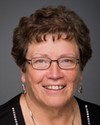Thank you very much Madam Chair.
Thank you very much, ladies.
You showed us the table illustrating the share of total employment that part-time work represents. In previous studies, Statistics Canada said that most women, nearly 90% of them, were working on a part-time basis by choice. Do you think that your studies might be biased because the questions that you put are not specific enough?
Thus, witnesses have told us that if they worked on a part-time basis, it was not really by choice but rather because there was no transportation, no child care service, etc. They decided not to work because they had no other choice. Do you think that by putting more specific questions, you could succeed in giving us a better picture, a more adequate and a more real picture of the status of the women who are working at part-time jobs?





